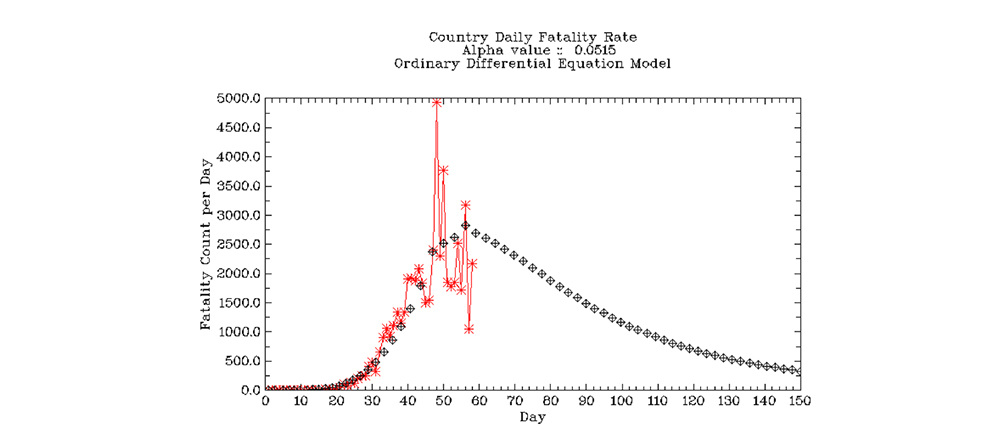Construction science prof refines COVID-19 statistical model
A model developed by Chinese researchers that health experts commonly use to predict coronavirus fatality rates has a narrower gap between predicted coronavirus cases and actual cases after it’s modified with tweaks created by John Nichols, associate professor of [construction science] (http://cosc.arch.tamu.edu/) , who has decades of experience as a statistical analyst.
The predictions that public health experts make about infectious outbreaks such as coronavirus are based on what’s called a SEIR model. The acronym stands for susceptible, exposed, infectious, and recovered, and is a statistical approach to predicting the number of people at each step of an infectious disease outbreak.
In the Chinese model, which includes a fatality component, Nichols saw a notable difference between the model’s predicted COVID-19 cases and fatalities and actual cases and fatalities. ““I looked at one of the published datasets and it didn’t look sound from a statistical standpoint,” said Nichols.
He consulted with a colleague, Nino Kordzakhia, a statistics expert and faculty member at Macquarie University in Sydney, Australia, about the SEIR formula. She thought Nichols’ idea to tweak the formula so that it its predictions would more accurately conform to actual daily fatality numbers was worth exploring.
To develop the tweaks and improve the model, Nichols applied two standard statistical methods. He did his work in Fortran, a general-purpose programming language mainly intended for mathematical computations, to make his approach broadly accessible.
“Using Fortran doesn’t require a knowledge of difficult statistical software or a statistical background,” said Nichols. “You just need a computer and you can run it anywhere in the world.”
Nichols published his initial tweaks to the SEIR model in Fortran forums online, and with forum users’ feedback, has been gradually refining the tweaks and closing the gap between SEIR predicted coronavirus cases and actual numbers, as well as the model’s predicted fatalities and the actual numbers.
The program is now in the public domain, and Nichols has submitted a paper detailing the project to the Journal of Statistical Software, which is published by the Foundation for Open Access Statistics. The journal is dedicated to improvement of state-of-the-art in statistical computing in all areas of empirical research.
For many years, Nichols has created and refined statistical models for earthquake fatalities and bridge strength and durability, and used his experience to work with COVID-19 figures.
“Data is data,” said Nichols. “When you’re tweaking a model, data doesn’t care whether it’s coming from a bridge or the coronavirus,” he said.
Something as abstract as statistics can be a great aid in battling the coronavirus, said Nichols.
“The virus is the meanest beast we’ve ever fought, without a doubt,” he said. “It’s sitting there in a reservoir in the community waiting for us to make a mistake. It doesn’t care about time. It’s just sitting there waiting for you to make a mistake until you beat it, and the only way you can beat it is by quarantine or by developing a vaccine.”
Nichols’ research and various tweaks of the SEIR model is supported by the College of Architecture.
Richard Nira
rnira@arch.tamu.edu
Previous post
Tags
- archone gallery
- coa gallery
- construction science
- cosc gallery
- interdisciplinary
- research
- rss
- wellness
Related Posts

Oct. 23 symposium spotlighted college, faculty research

Oct. 29 symposium spotlights college, faculty research

College honors 6 outstanding alumni at Nov. 15 ceremony

Profs studying how to train workers in extreme environs
Follow Us
Facebook Twitter Vimeo Youtube Flickr RSS
Recent Posts

Planning prof heads study of disaster housing aid

A message from the dean

Former student remembered as expert planner

Leading educator named new head of Architecture Dept.






_thumbnail_small.png)
